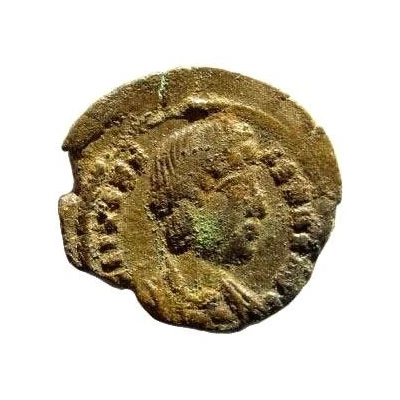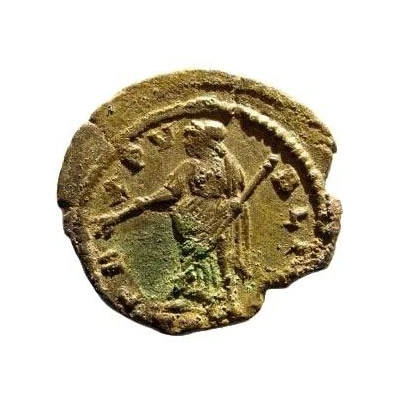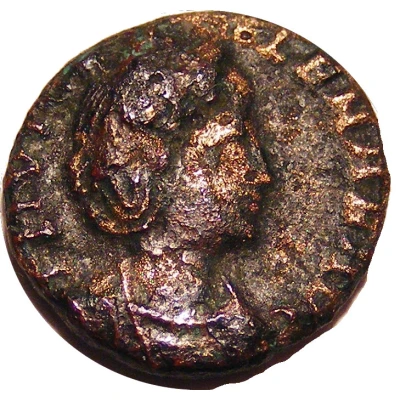


© Tanner Scott
Follis - Constantinus II GLORIA EXERCITVS; Thessalonica
| Bronze | 1.22 g | 17 mm |
| Issuer | Rome › Roman Empire (27 BC - 395 AD) |
|---|---|
| Emperor | Constantine II (337-340) |
| Type | Standard circulation coin |
| Years | 337-340 |
| Value | Follis (1⁄180) |
| Currency | Solidus, Reform of Constantine (AD 310/324 – 395) |
| Composition | Bronze |
| Weight | 1.22 g |
| Diameter | 17 mm |
| Thickness | 1 mm |
| Shape | Round (irregular) |
| Technique | Hammered |
| Orientation | Medal alignment ↑↑ |
| Demonetized | Yes |
| Updated | 2024-10-04 |
| Numista | N#197404 |
|---|---|
| Rarity index | 84% |
Reverse
Two soldiers, helmeted, draped, cuirassed, facing front, heads toward each other, each holding inverted spear in outer hand and resting inner hand on shield; between them, a standard.
Script: Latin
Lettering:
GLORI-A EXER-CITVS
SMTSA
Interesting fact
The Follis coinage was introduced by Emperor Diocletian in 294 AD as a replacement for the debased denarius, and it was used until the end of the Roman Empire in the 5th century. The Follis coin was made of bronze and had a distinctive large module, which made it easily recognizable. The coin , the Follis - Constantinus II (GLORIA EXERCITVS; Thessalonica) (337-340), is a rare example of a Follis coin that was minted during the reign of Emperor Constantine II, and it features the emperor's name and title on one side, and the legend "GLORIA EXERCITVS" (Glory of the Army) on the other.



